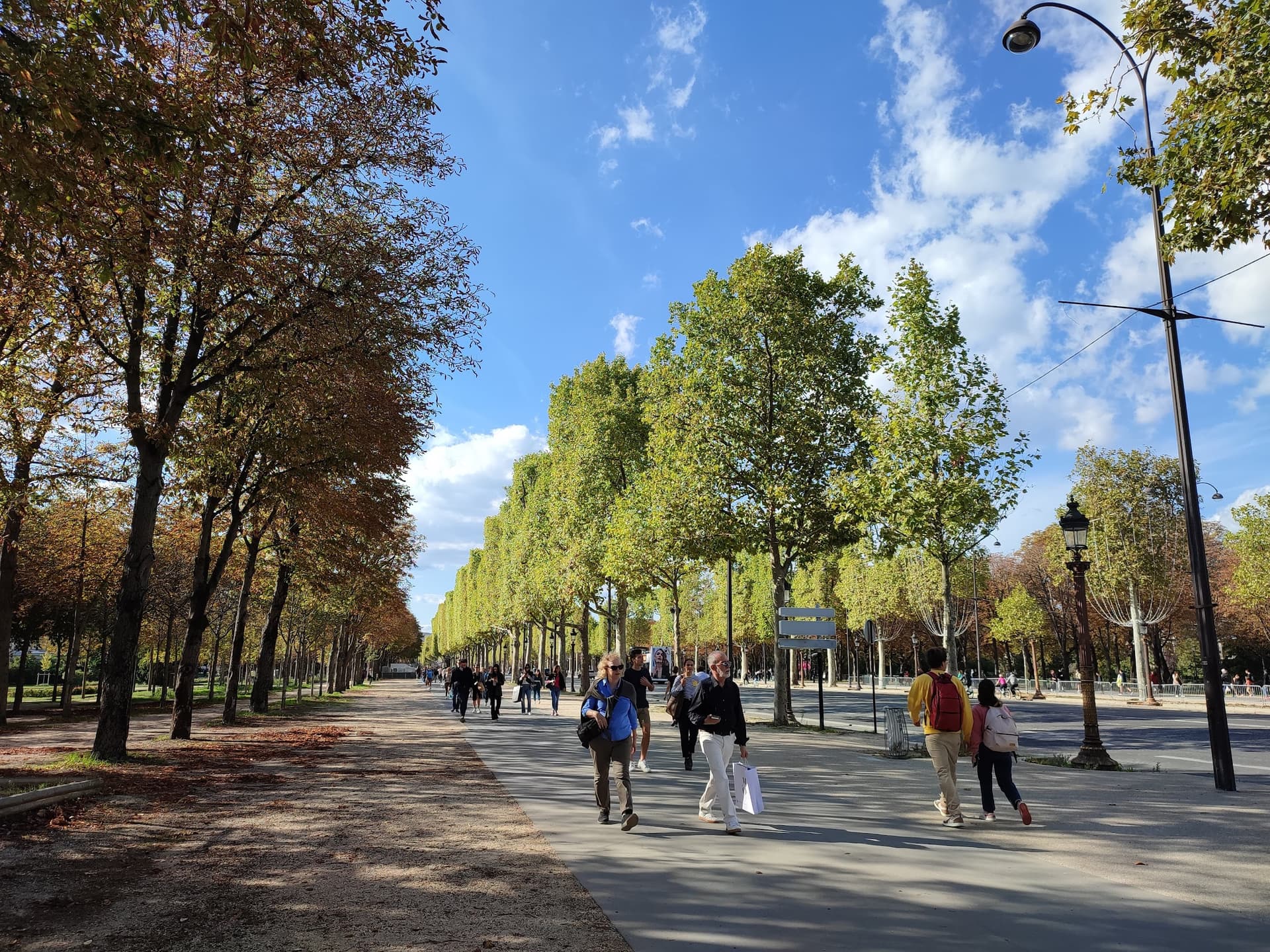Audio GuideJardin des Champs-Élysées
Jardins des Champs-Élysées
Iconic formal gardens landscaped by André Le Notre in 1667, with theaters, palaces & statues.
Welcome to the enchanting tale of the Jardin des Champs-Élysées, a historic public park situated in the eighth arrondissement of Paris. This park was originally created in sixteen sixty-seven by the acclaimed landscape architect André Le Nôtre as an extension of the Tuileries Gardens, featuring symmetrical flowerbeds and tree-lined avenues that epitomised the classic French formal garden style.
As the years passed, the park underwent various transformations. In the eighteenth century, it was carefully restored by Abel François Poisson, and in eighteen forty, Jacques Ignace Hittorff reinvented the area by incorporating decorative fountains, cafés, restaurants, and a theatre. With each change, the park adapted to reflect contemporary tastes, eventually transitioning towards a picturesque English garden style. Meandering paths were introduced, and groves of chestnut trees replaced the original elm trees.
Jardin des Champs-Élysées played a significant role during major events, such as the Paris International Exposition in eighteen fifty-five and the Universal Exposition in nineteen hundred, when iconic cultural edifices like the Grand Palais and Petit Palais were constructed.
Today, visitors can enjoy not only the park's natural splendour but also its cultural riches. The park is home to theatres, exquisite dining options, and monuments honouring figures such as the poet Alfred de Musset, explorer Jacques Cartier, and renowned designer Pierre Cardin. Literature, particularly the novels of Marcel Proust, has woven the garden into the tapestry of French cultural identity, establishing it as a place where art, history, and nature coexist harmoniously.






